Greek Art Exam 2
1/29
There's no tags or description
Looks like no tags are added yet.
Name | Mastery | Learn | Test | Matching | Spaced |
|---|
No study sessions yet.
30 Terms
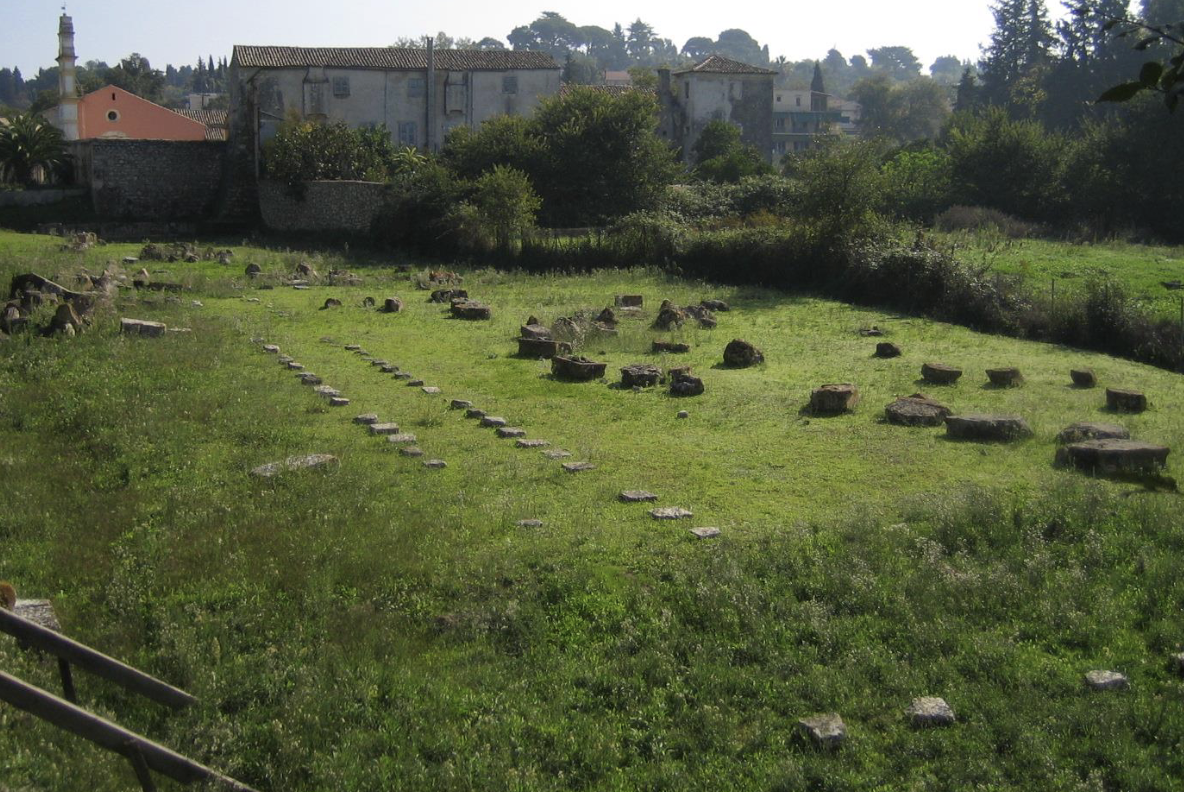
Temple of Artemis, Corcyra
early archaic (590)
stone
Corcyra/ Corfu
pediment shows medusa holding her son, panthers on either side, and gigantomachy
octostyle peripteral temple with pronaos and opisthodomos distyle in antis and a cella with a double internal colonnade

Temple of Hera, Samos
575-550 (early-mid archaic)
Samos
Rhoikos (and Therodos?)
one of most famous sanctuaries in Ancient world; everyone came here
Octostyle dipteral ionic temple with pronaos and cella with double internal colonnade
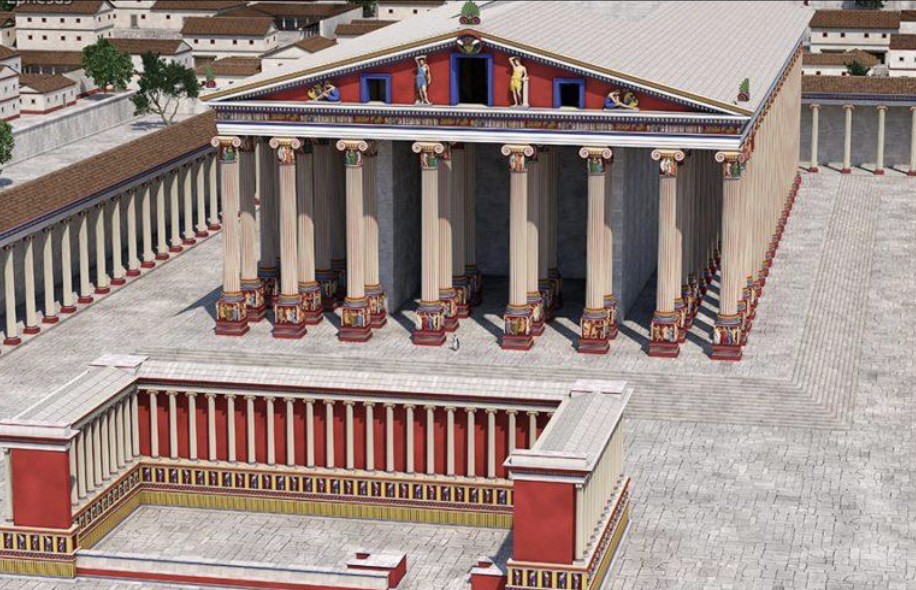
Temple of Artemis, Ephesos
mid archaic (560)
Ephesos
theodoros, kherisphron, metagenes
Octostyle Dipteral ionic temple
one of 7 wonders of the Ancient world; size of football field
City of Ephesos used the temple on its coin
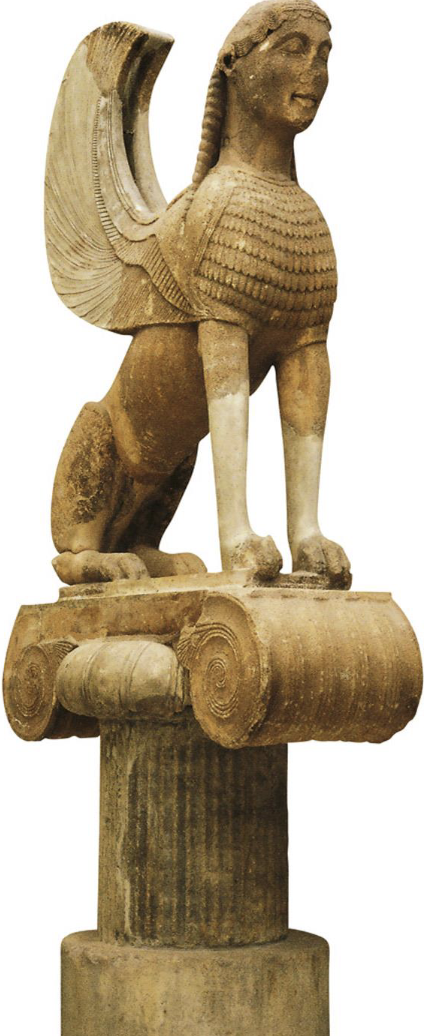
Naxian Sphinx
mid archaic (570-560)
Naxian marble
Delphi
a capital (sits on top of column); votive dedication
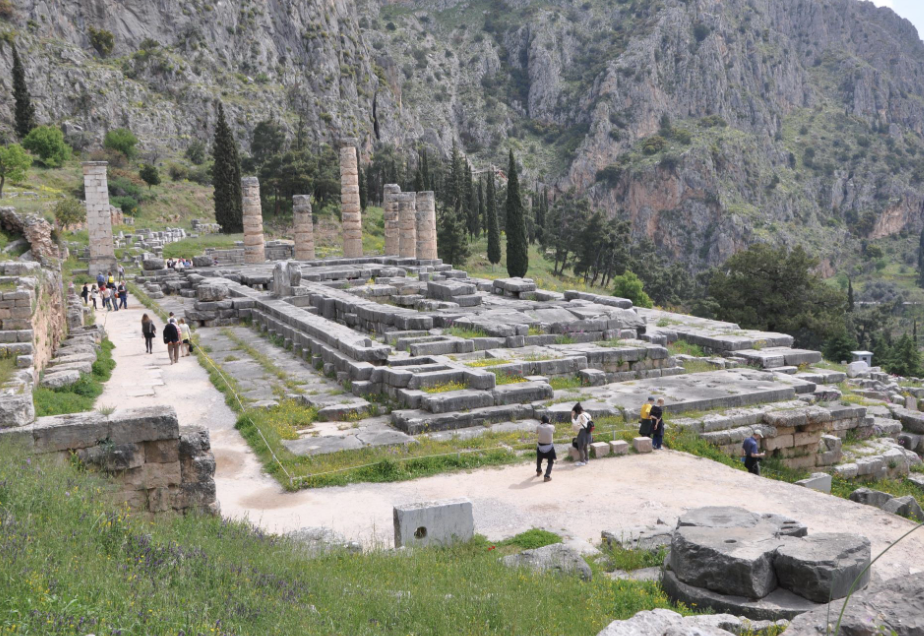
Temple of Apollo, Delphi
548, late 6th C, 4th C
marble, limestone
Delphi
late 6th C: Alkamainoid family
built 6x (3 mythical, 3 real)
first destroyed in fire, then earthquake
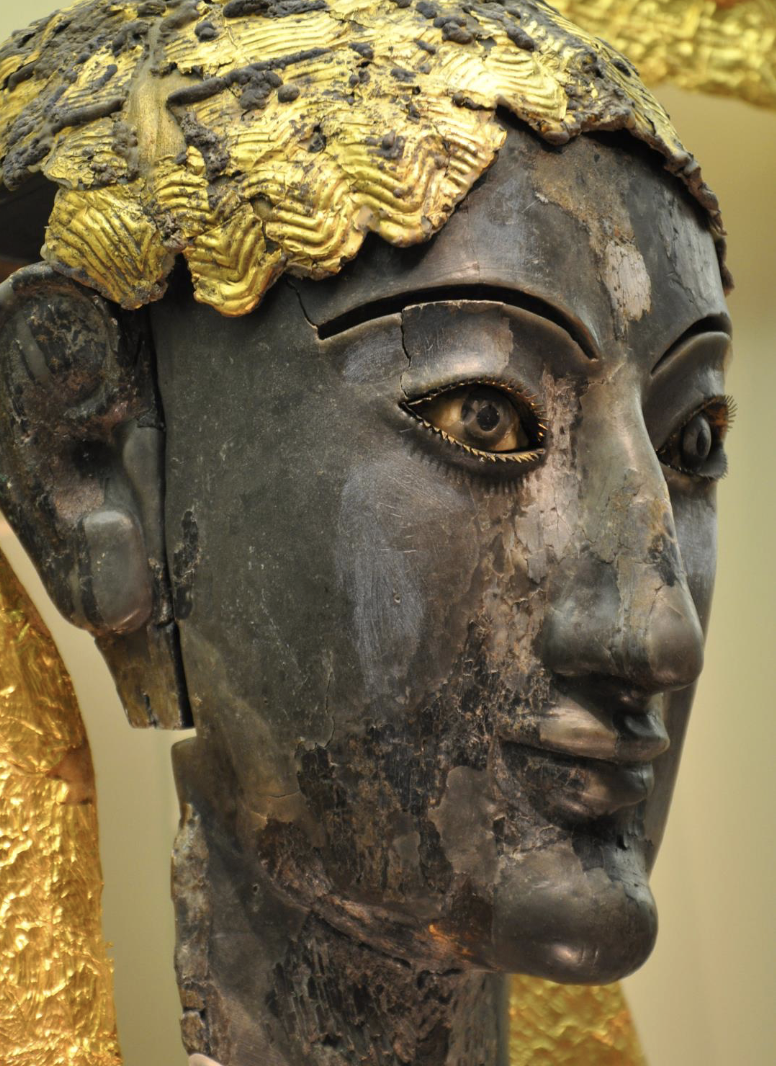
Chryselephantine cult statues
6th C (before 548)
Chryselephatine (gold+ivory)
Delphi
Of Apollo, Artemis and Leto
Eyes made out of glass paste (inset in); almond shape, archaic smile
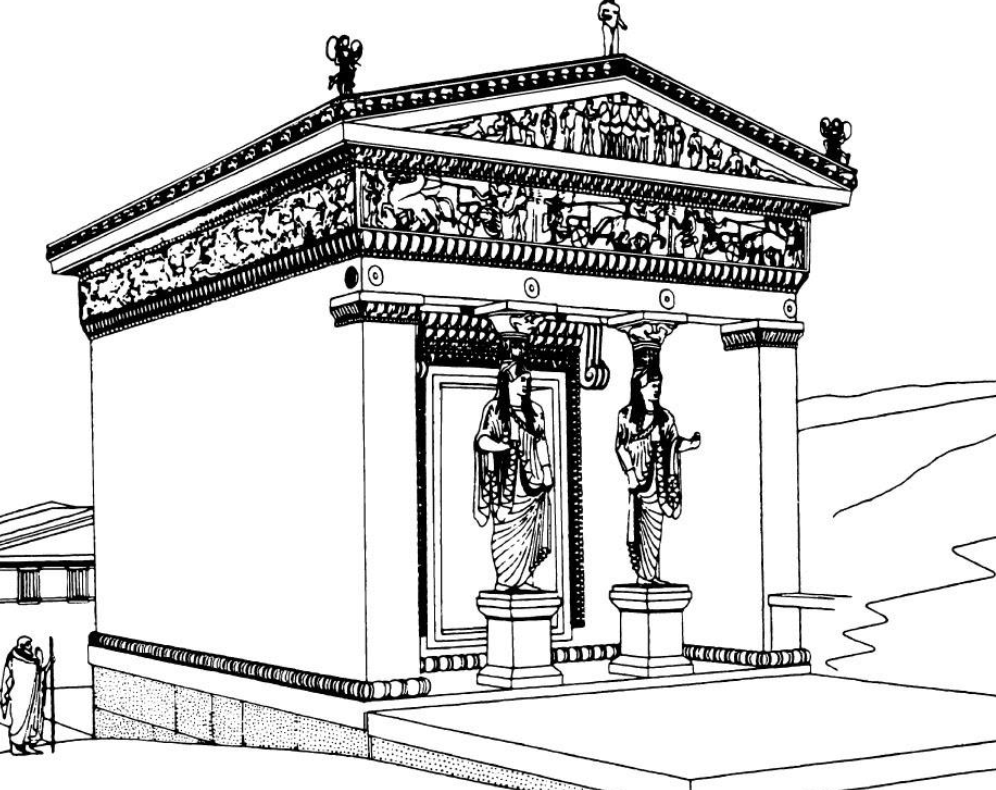
Siphnian Treasury, Delphi
525
marble
Delphi
Entrance faces west; so you see it when you leave Delphi
Caryatid
East pediment: Apollo and Herakles fighting over tripod cauldron; Athena stands in middle allowing Apollo to get cauldron
East frieze: Used paint to add names; gathering of Gods during Trojan war; koros; use of shadows for depth
North frieze: gigantomachy
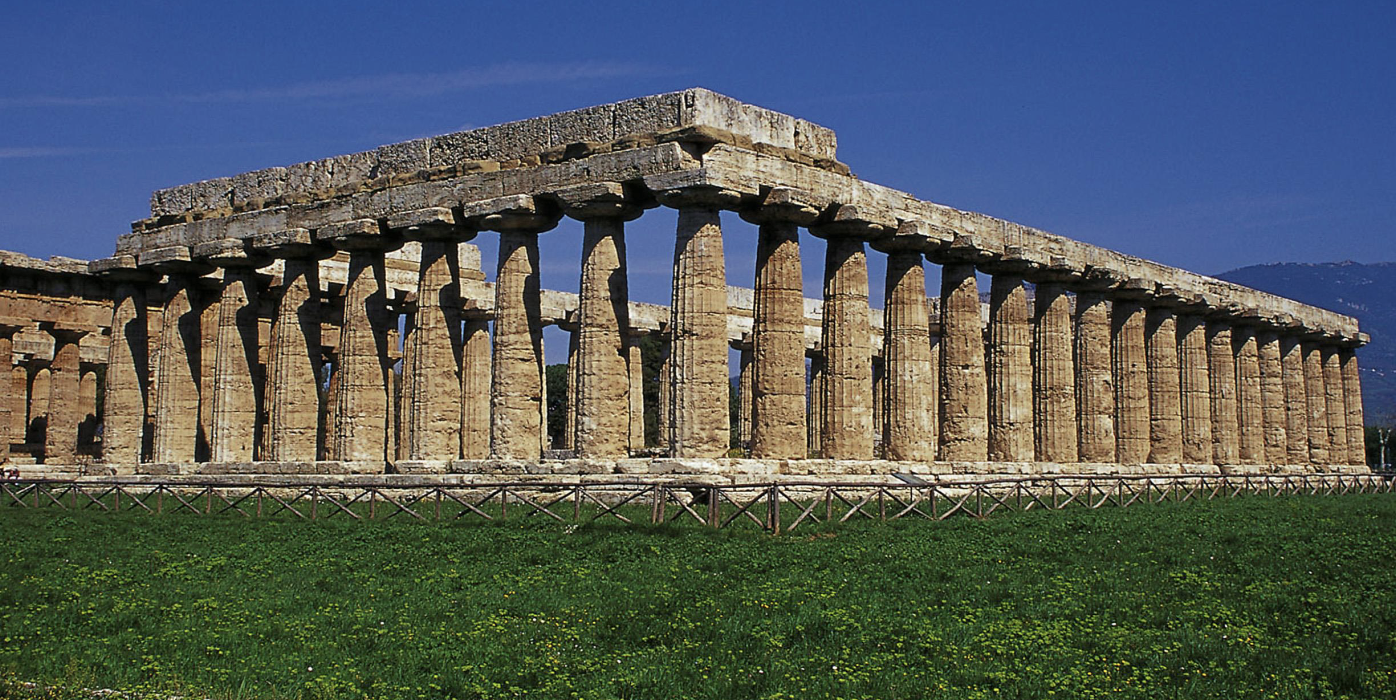
Temple of Hera (I), Poseidonia
mid archaic (550-520)
Poseidonia
“The Basilica”; two doors to get into the cella and adyton
Doric; columns get fatter as it goes down
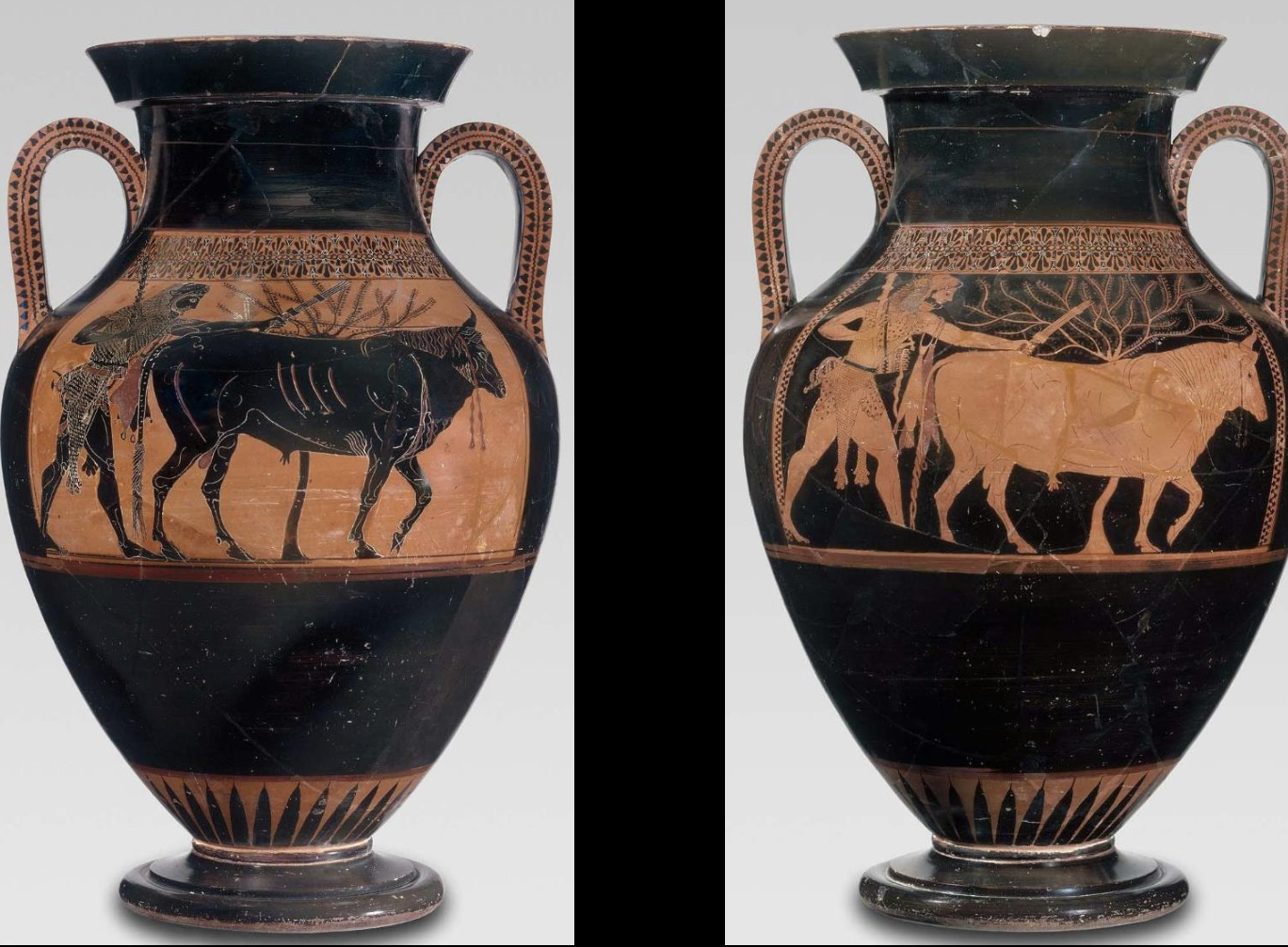
Andokides bilingual amphora (x2)
late archaic
Andokides painter (and Lysippides painter?)
bilingual
the second one (not pictured): Scene of symposium with Athena
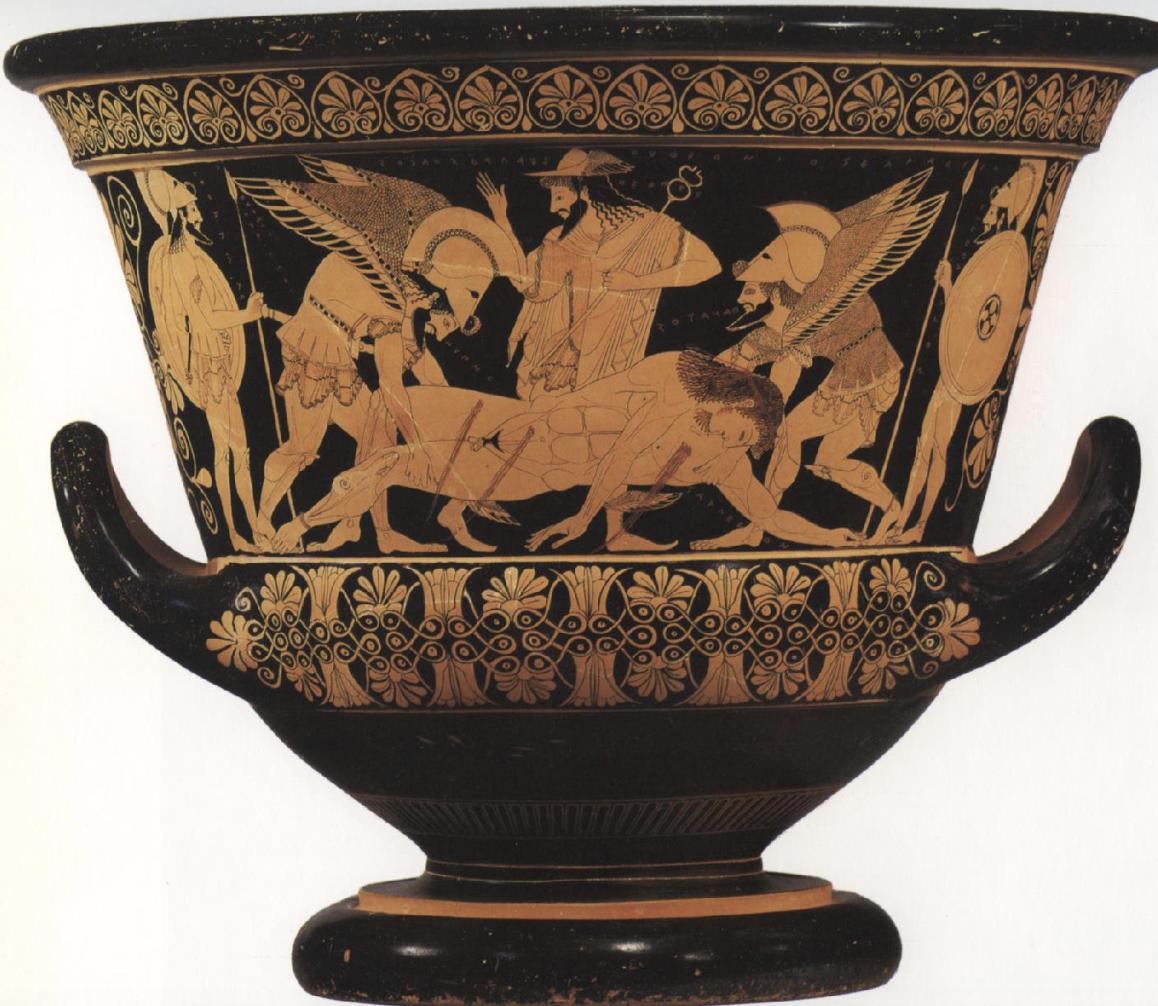
Euphronios krater
520-510
Athens
Euphronios (part of the Pioneer group)
red figure; shows two messengers: Hypnos (sleep) and Thanatos (death) sent by Zeus, to pick up Sarpedon out of the battlefield; escorted by Hermes
found in Etruria
directionality with the blood streaks; dilute blood and added red
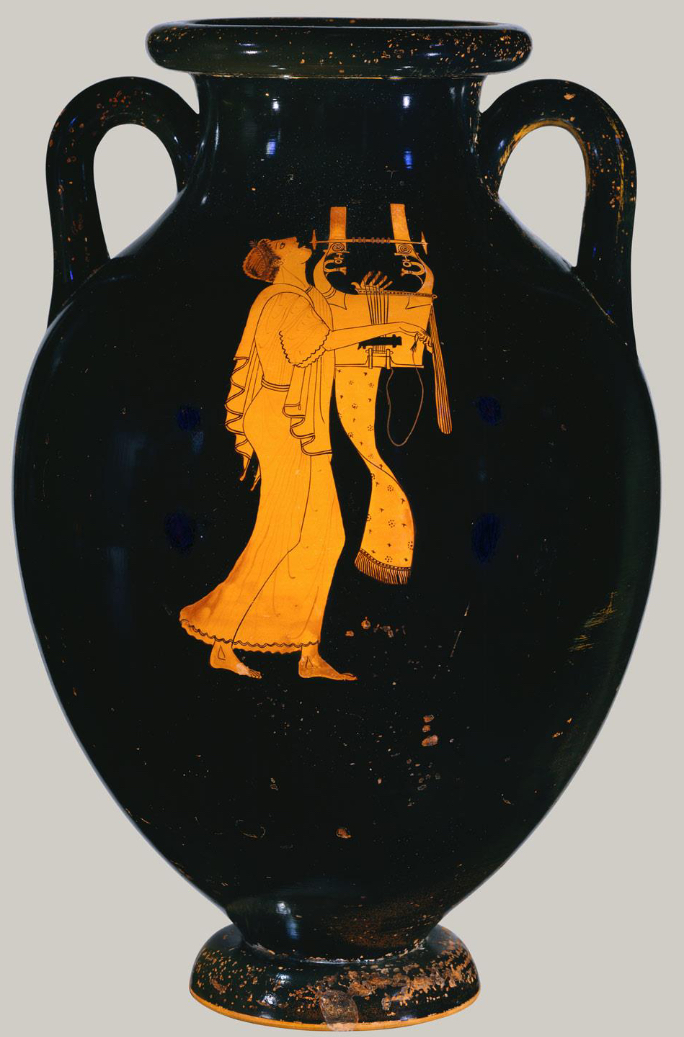
Berlin Painter Amphora
490
Berlin painter
normal man playing lyre (not a hero/ God)
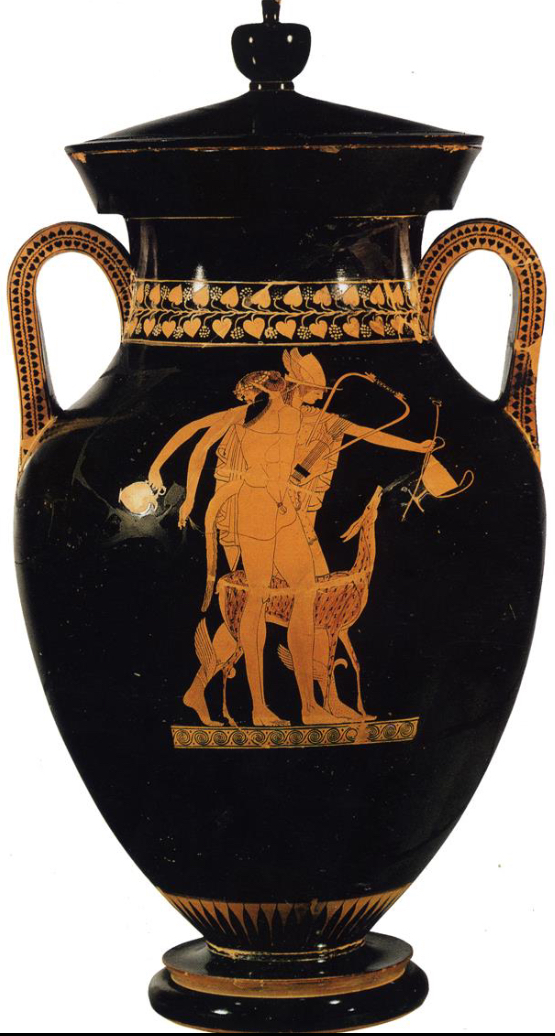
Berlin Painter Amphora
500-475
Berlin painter
two men and deer stacked up on top of each other; shows depth
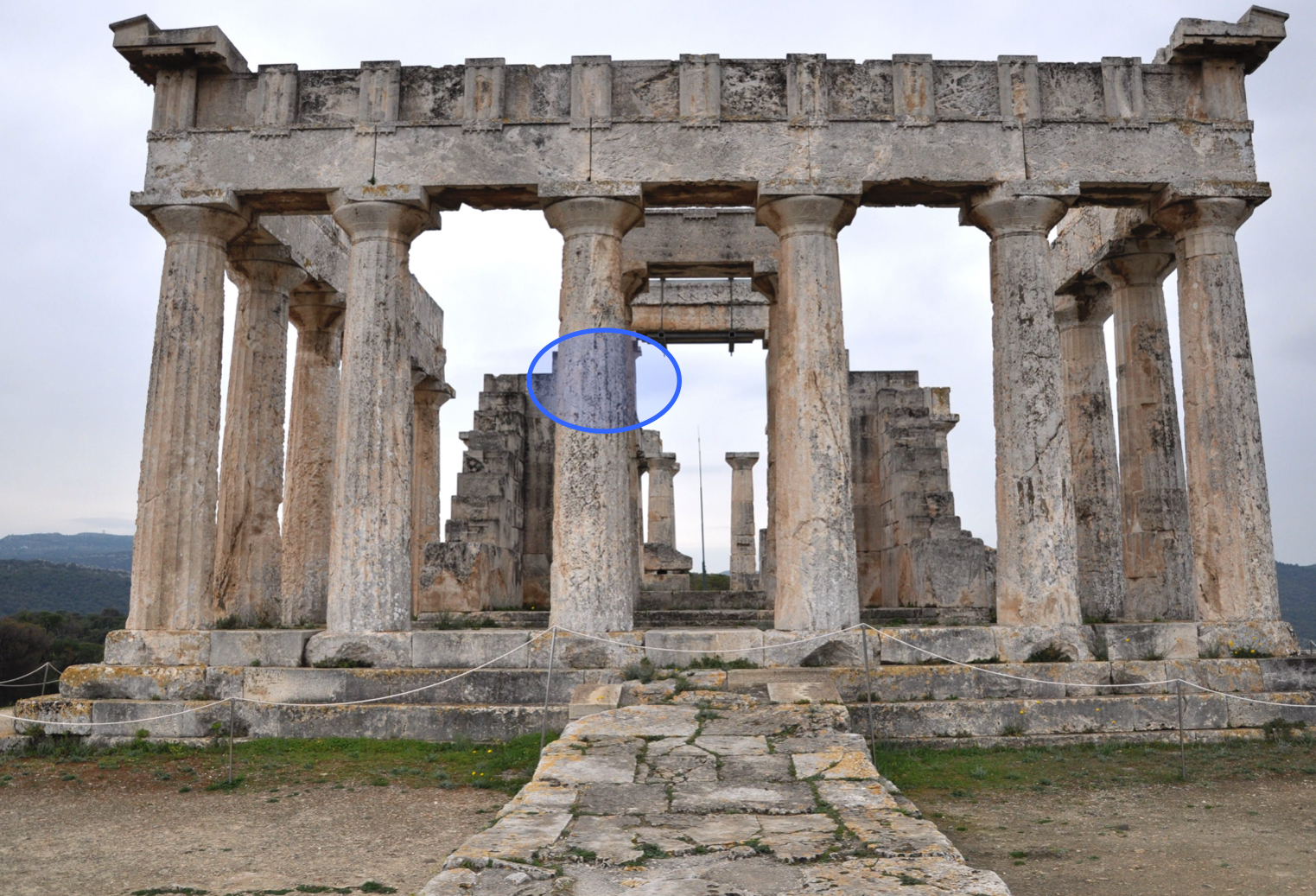
Temple of Aphaia, Aegina
500-475
Aegina
Doric; off centered door and has a ramp
West pediment: body had Archaic smile and frontality
East pediment: body had aloof face and torsion
debate on when it was built or if there were multiple builders
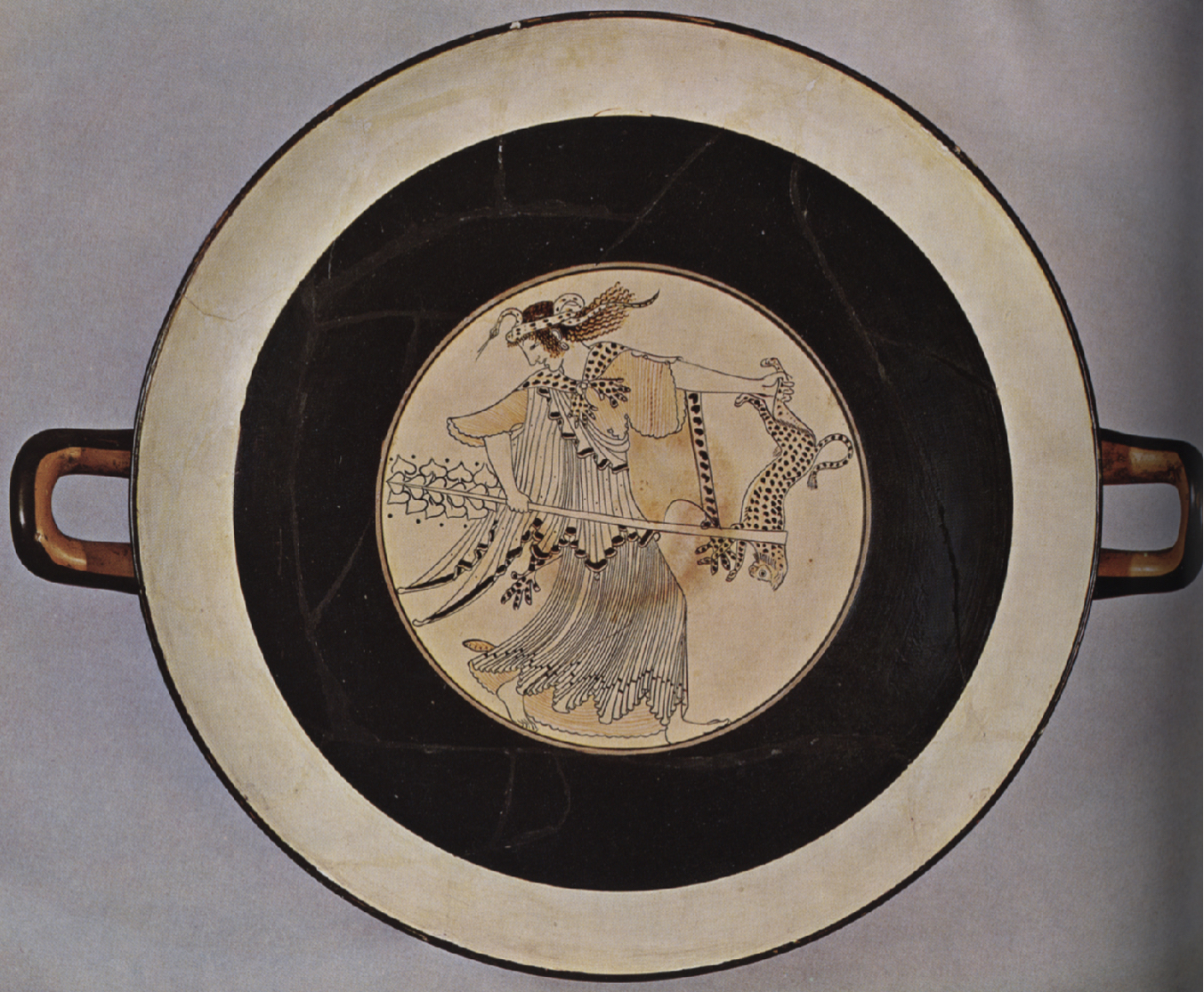
White-ground kylix
490
introduction of white-ground
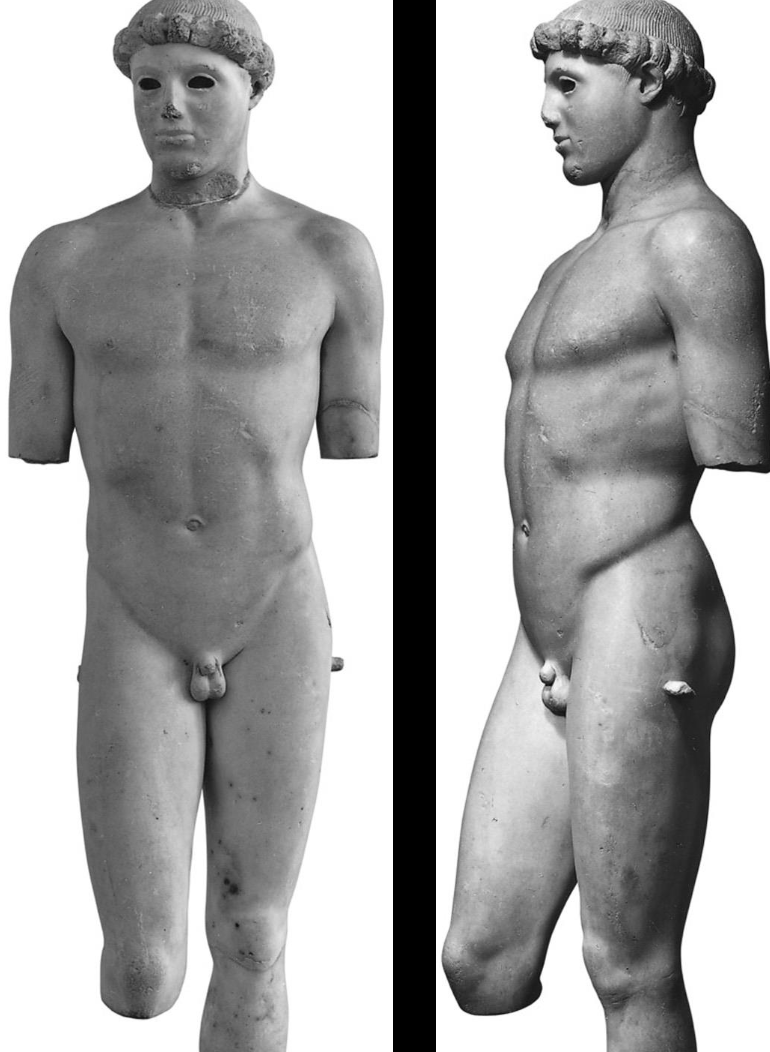
Kritios Boy
480-460
marble
Akropolis (Athens)
contrapposto; right leg forward, slight head tilt, little knob coming out of leg to keep arms from falling off
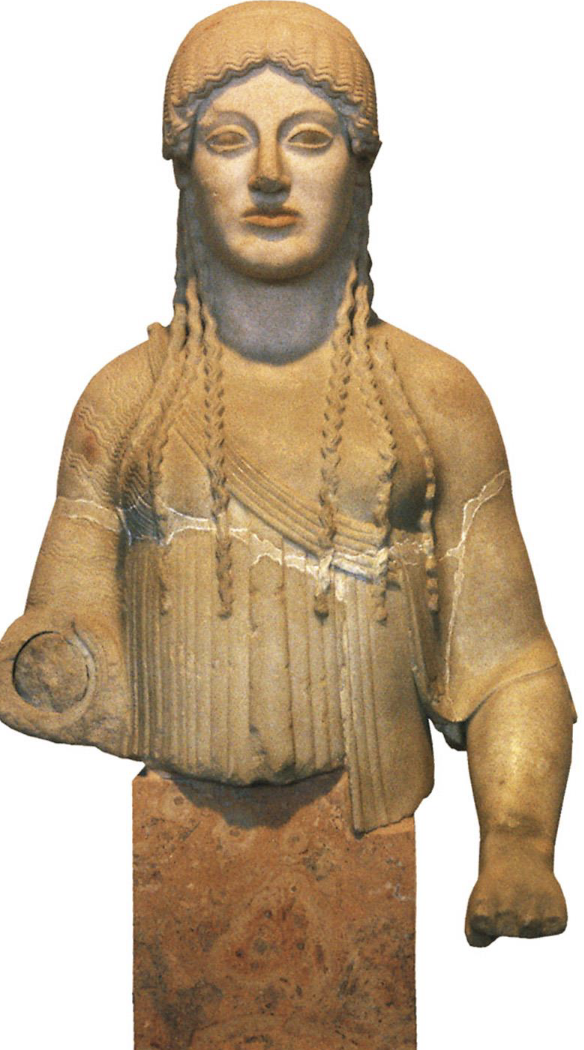
Euthydikos Kore
490-480
marble
Akropolis (Athens)
Euthydikos is the person who dedicated her; contrapposto; no archaic smile
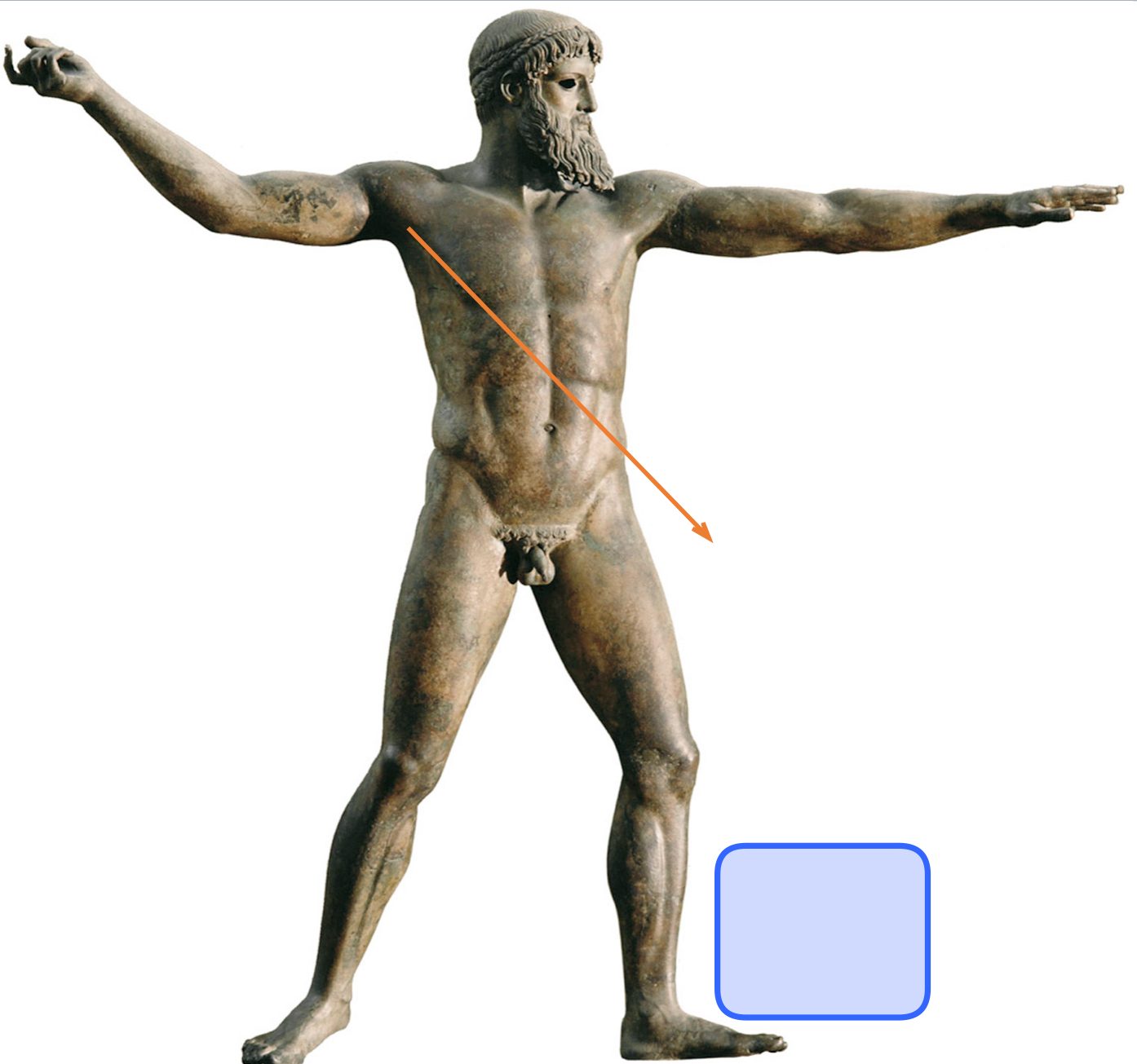
Artemision Zeus
470
bronze
Artemision (off the coast of mainland Greece)
found in a shipwreck
either Zeus throwing a lightning bolt or Poseidon throwing a trident
more attention to adult bearded male figure
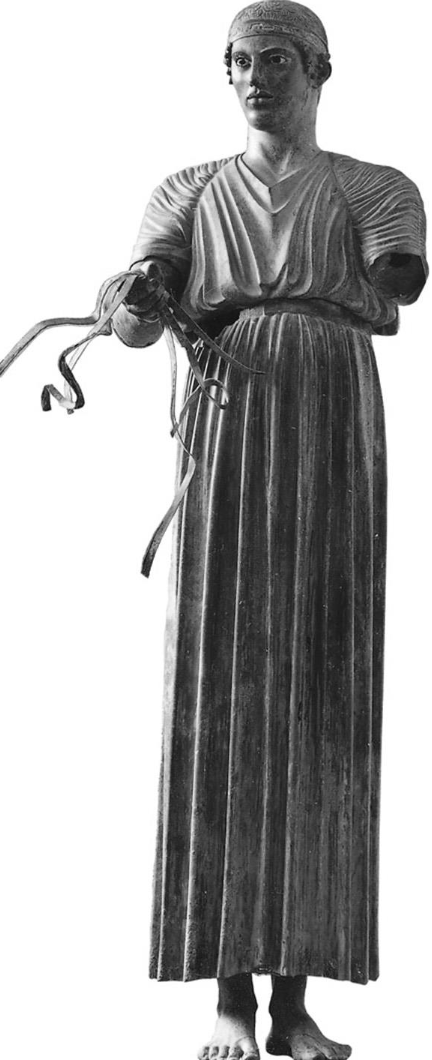
Delphi Charioteer
475-466
bronze
Delphi
wearing a chiton; Dedication for the person who won the chariot races in Pythian games
missing pieces; used to be horses and another man connected
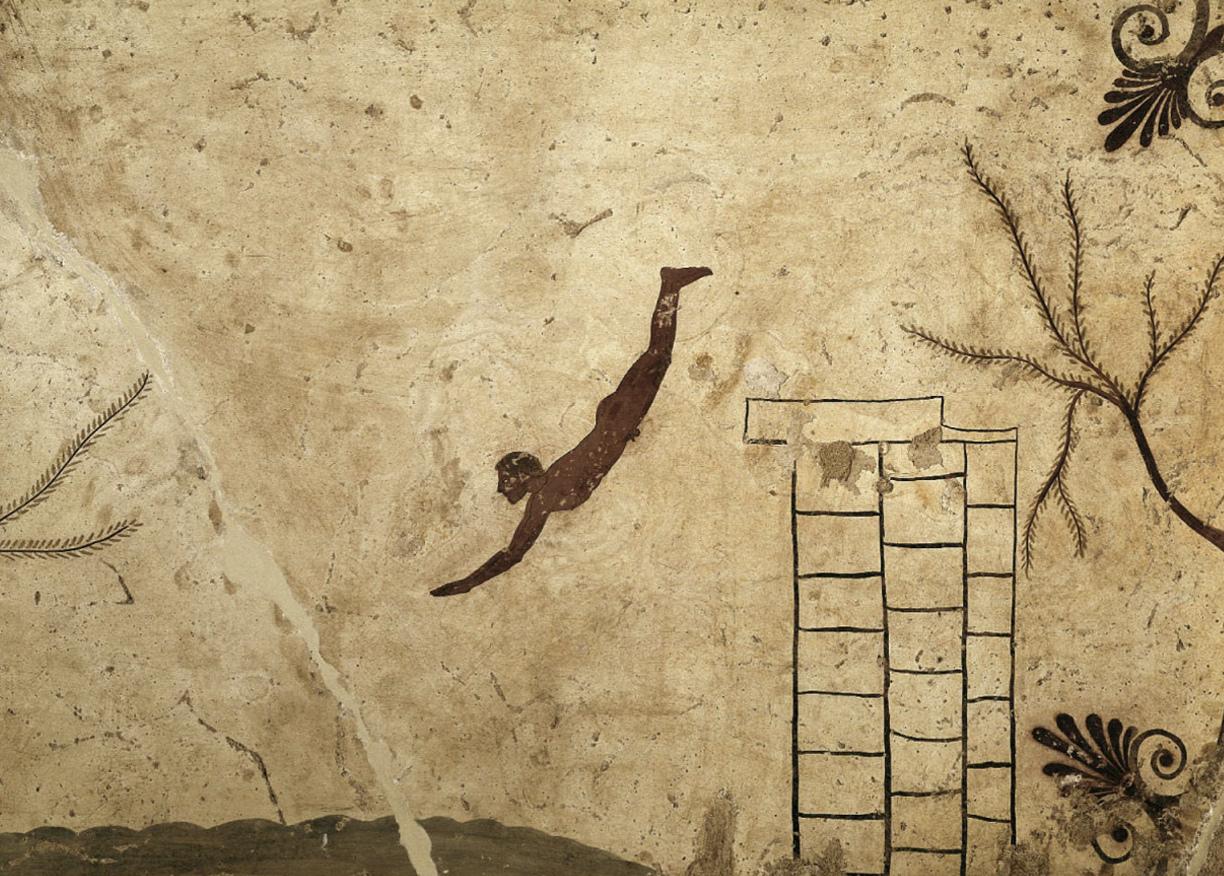
Tomb of the Diver
470-460
stone
Paestum/ Poseidonia
Stone walls and lid were painted; typical Etruscan decoration (not common for Greeks); mixture of cultures
shows a symposium with kylikes and a volute krater
Kottabos: Ancient Greek drinking game; holds kylix by the edge
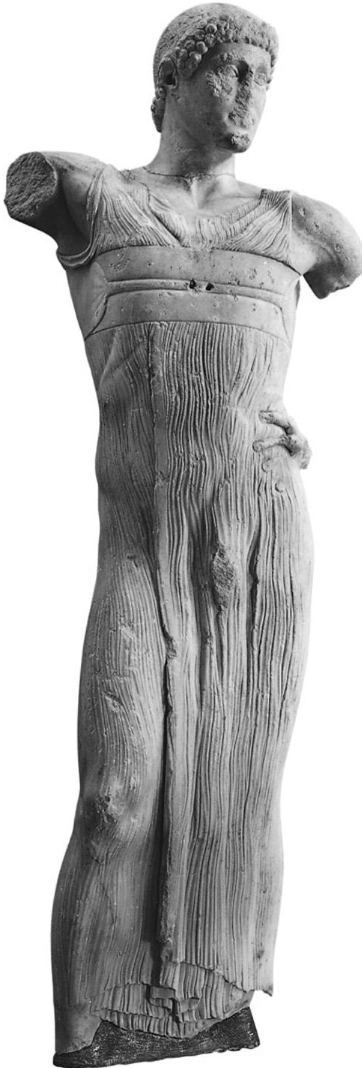
Motya Youth
470-450
Parian Marble
Carthage (nearby Motya)
Heavy torsion; shown by clothes as well
Pouty lips; break of frontality; smaller almond shaped eyes

Marble Lekythos
475-450
the lekythos itself was a grave marker
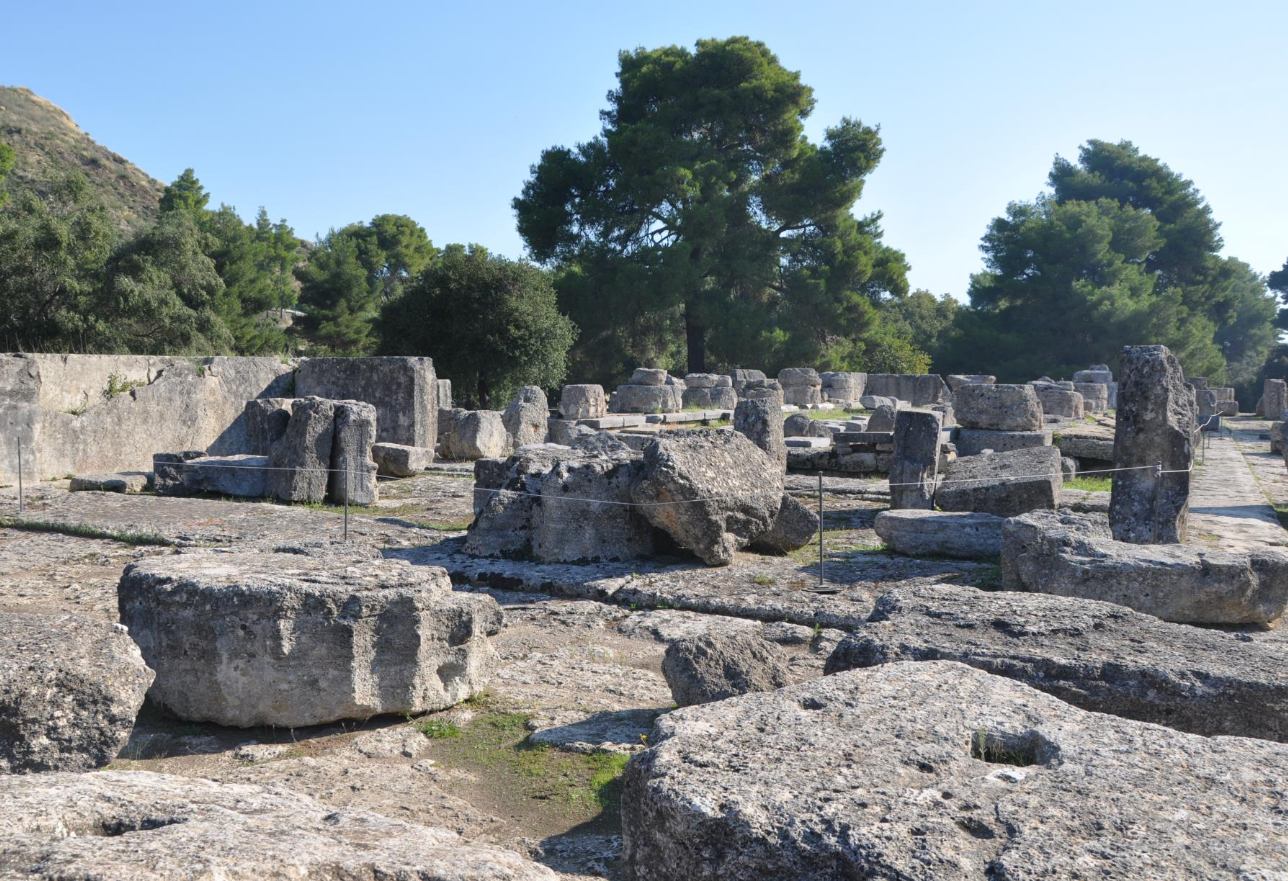
Temple of Zeus at Olympia
470-456
local limestone covered with plaster (with a bit of marble)
Olympia
Libon of Elis
largest Greek temple on mainland Greece at the time
fossiliphorus; empolium cutting;
metopes were made out of marble to they can make detail

The Riace Warriors (A and B)
ca 460
bronze
Riace (off coast of Italy)
very detailed face with other colors (silver teeth, copper nipples, glass paste eyes)
Contrapposto
left hand probably held a hoplon
Warrior A: right hand held a spear
Warrior B: less curly and shorter hair
more attention to adult bearded male
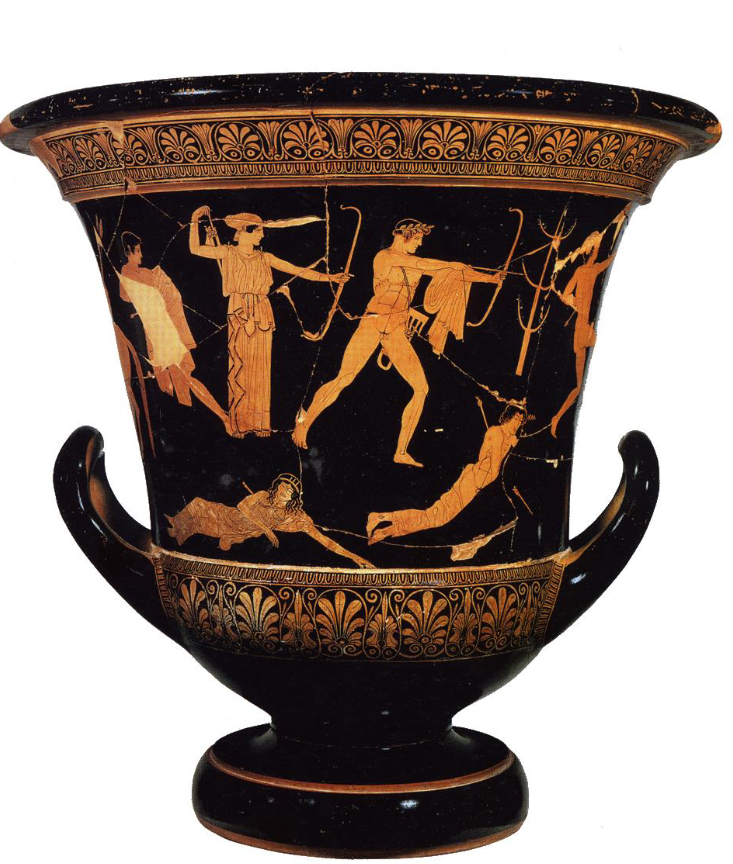
Niobid Painter krater
460-450
Niobid Painter
Shows Apollo and Artemis killing Niobid’s 8 children (the children have torsion; ¾ view, while Gods have frontality)
Uses thin lines as landscape; adds depth
Also shows gathering of normal people and Apollo and Herakles (with older features rather than youthful)
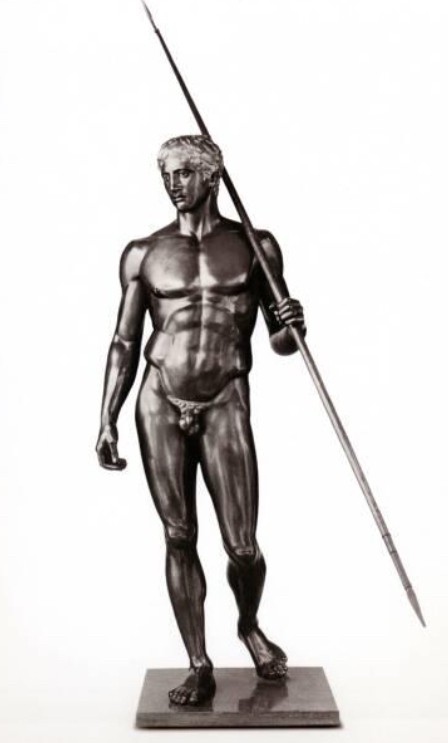
Doryphoros (spear-bearer)
460-440
bronze
Polykleitos (artist)
24 copies of this; no original
“Polykleiton canon”: 7:1 ratio; contrapposto
Chiasmus (x shape)
bronze is more sturdy and durable; stone breaks
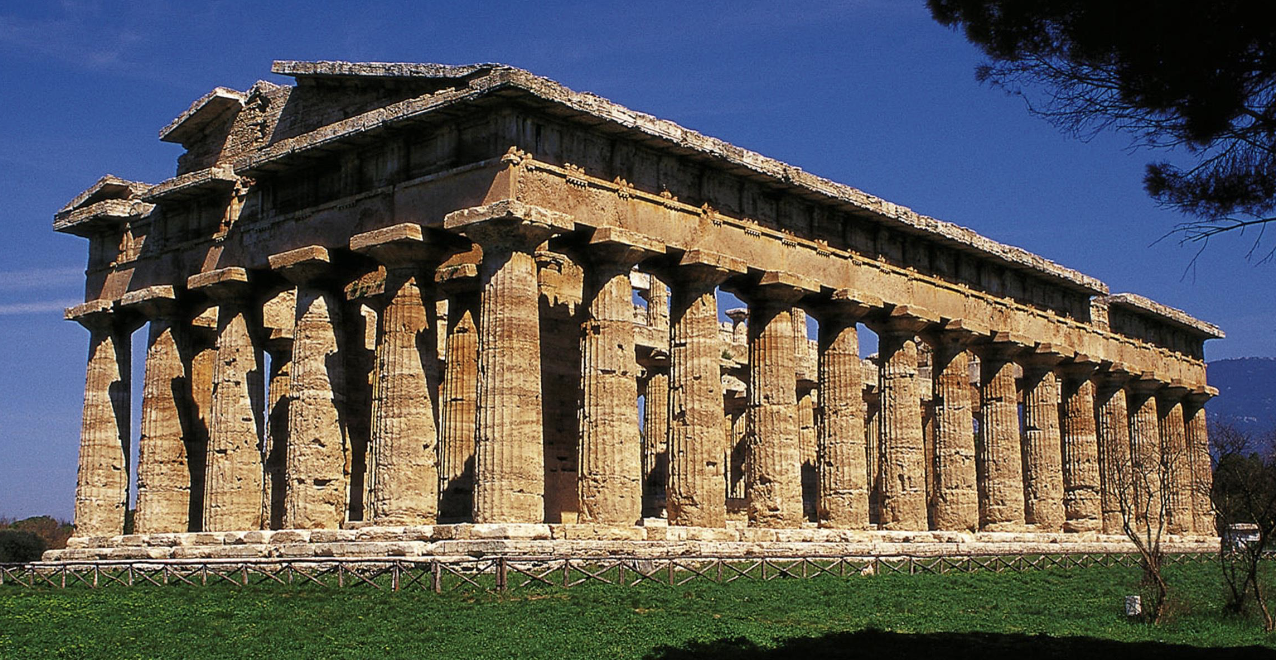
Temple of Hera (II), Poseidonia
Classical (450)
Poseidonia
(or Zeus or Poseidon)
Capitals are firmer and straighter compared to Hera (I)
moving towards symmetry
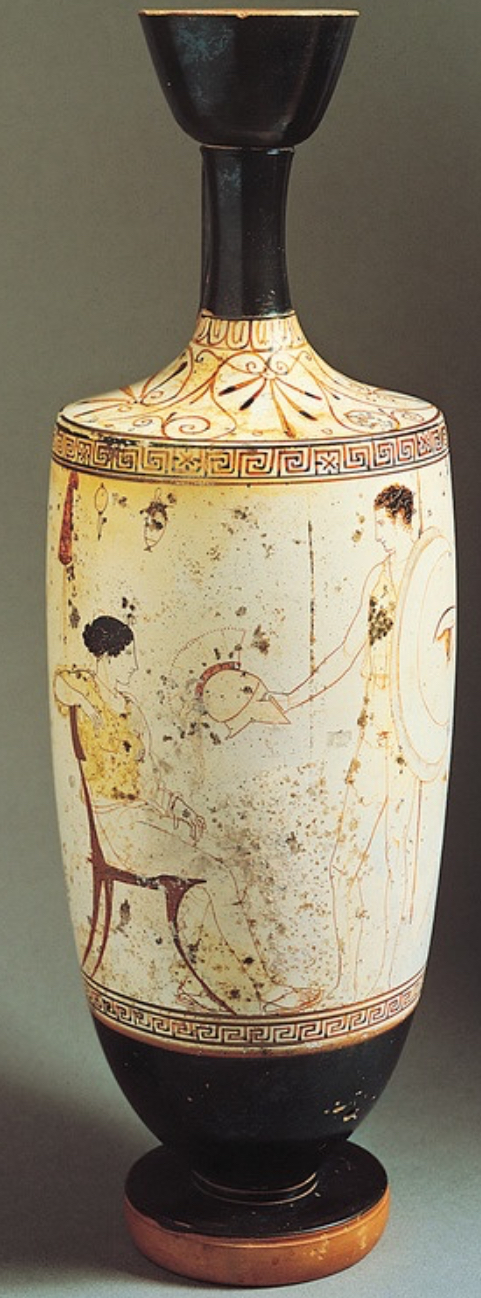
Achilles painter Lekythos
440
Kerameitos cemetery (in Athens)
Achilles painter
shows departure of loved one
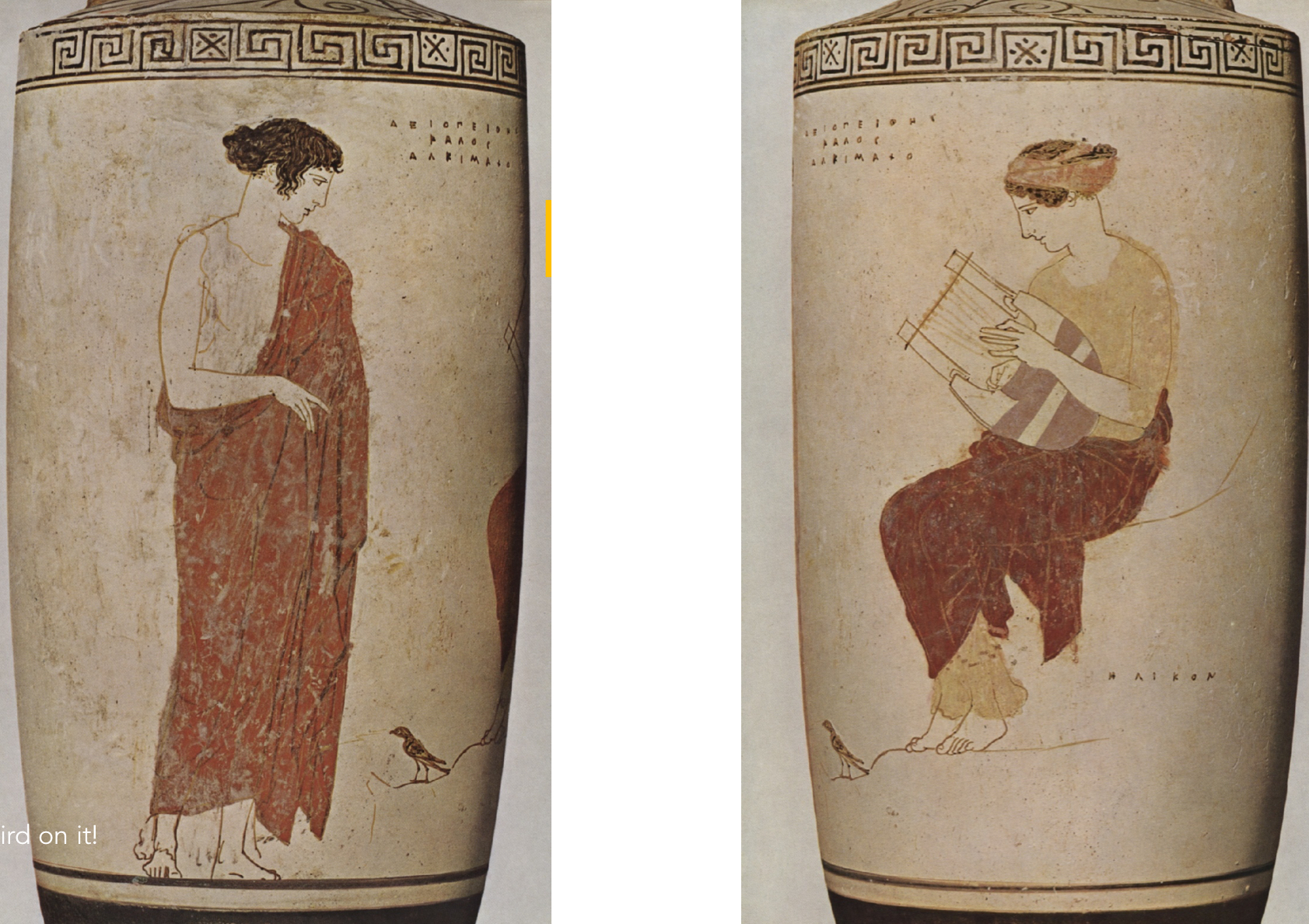
Achilles painter lekythos
440
Athens
Achilles painter
added color; shows different types of fabric
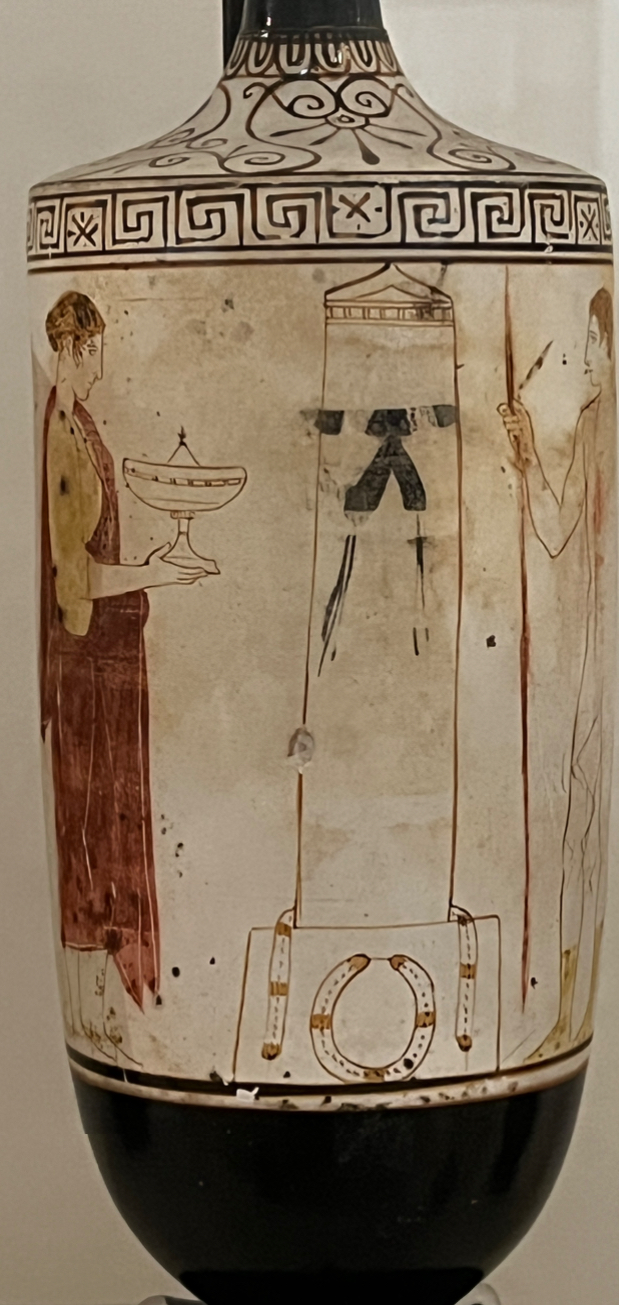
Achilles painter lekythos
440
Athens
Achilles painter
depiction of the funerary ritual of pouring out libations
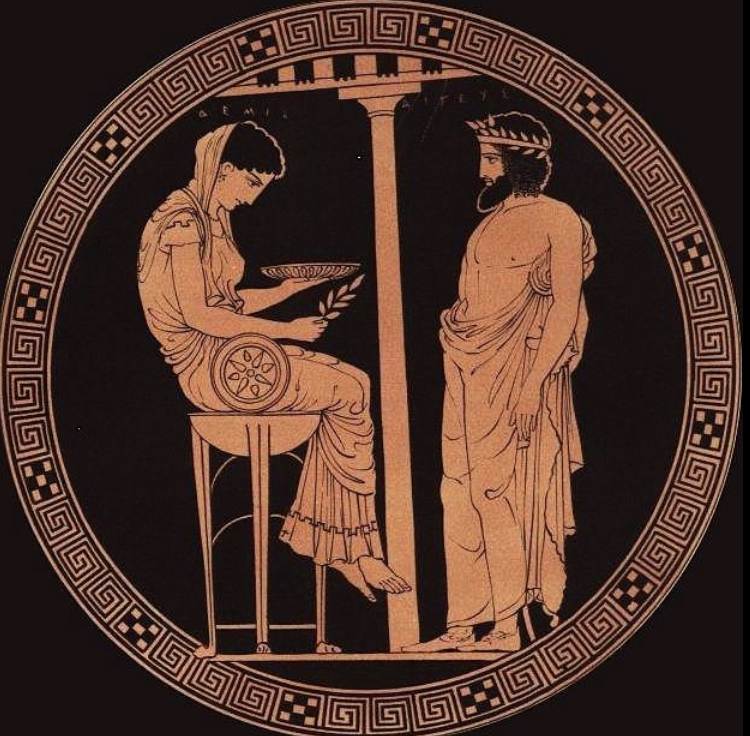
Kylix by Codrus Painter
450-430
terracotta
Codrus Painter
Picture of man consulting the Pythia; sitting on tripod cauldron holding a laurel branch; chews on laurel leaf to get into a trance to answer the questions